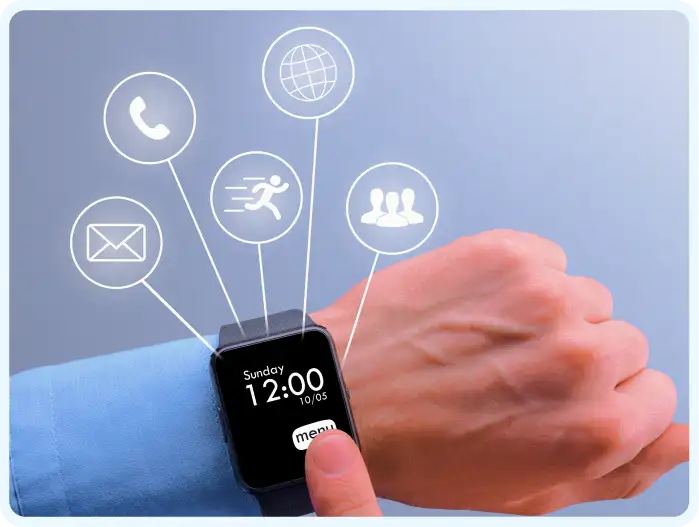ROI of Investing in Wearable App Development Services
As the world becomes increasingly interconnected, wearable technology has emerged as a powerful tool for both consumers and businesses. Devices like smartwatches, fitness trackers, AR/VR headsets, and smart clothing are not only enhancing individual lifestyles but are also opening up new business opportunities. For companies looking to stay ahead in competitive markets, investing in Wearable App Development Services can deliver a substantial return on investment (ROI). This article explores the tangible and intangible benefits of investing in wearable app development and how businesses can maximize their ROI in this fast-growing industry.
Growing Market Demand
The global wearable technology market is experiencing rapid growth. According to recent market research, the wearable tech market is expected to surpass $150 billion by 2028. This growth is driven by increasing consumer demand for health and fitness tracking, real-time notifications, hands-free interactions, and immersive user experiences.
Businesses that invest early in wearable app development position themselves to meet this rising demand. By creating apps that integrate seamlessly with wearables, companies can offer enhanced user experiences, build stronger brand loyalty, and gain a competitive edge—all of which contribute positively to ROI.
Enhanced Customer Engagement
Wearable apps enable businesses to engage customers in more personal and contextual ways. Unlike traditional mobile apps, wearable apps are designed for instant access and real-time updates. This allows businesses to:
- Send timely alerts or promotions
- Offer personalized fitness or wellness recommendations
- Track user behavior to deliver targeted content

For instance, a fitness brand that develops a wearable app can track users’ workouts and provide real-time coaching, diet suggestions, or product recommendations. This continuous engagement builds deeper customer relationships, increases lifetime customer value, and improves overall ROI.
Operational Efficiency and Cost Savings
Wearable technology is also being integrated into enterprise environments to enhance internal operations. Industries like healthcare, logistics, manufacturing, and field services are already seeing major efficiency gains through wearable solutions.
- Healthcare: Smartwatches and biosensors can track patient vitals, reducing the need for frequent manual check-ups.
- Logistics: Wearable devices like smart glasses assist warehouse workers with hands-free inventory management.
- Manufacturing: Smart helmets and augmented reality (AR) headsets provide step-by-step assembly instructions, reducing error rates and training costs.
Investing in custom wearable apps tailored to your industry needs can lead to measurable improvements in productivity, reduced human error, and decreased operational costs—all contributing positively to ROI.
Competitive Differentiation
In many markets, offering a unique wearable experience can differentiate a brand. Wearable apps often tap into emerging technologies like AI, machine learning, and IoT, enabling businesses to offer innovative services that competitors may not provide.
For example, a travel company that creates a smartwatch app for real-time travel updates, language translation, or itinerary management can stand out in a saturated marketplace. This kind of differentiation not only attracts new customers but also builds a stronger brand identity—both of which support long-term returns on investment.
Data-Driven Decision Making
Wearable devices are powerful data collection tools. With user consent, wearable apps can gather valuable data on user behavior, location, preferences, physical activity, and more. This data, when properly analyzed, can be used to:
- Refine marketing strategies
- Enhance product development
- Improve customer segmentation
- Forecast trends and demand
This data-driven approach results in smarter business decisions and more efficient resource allocation. The insights gained from wearable apps can reduce customer acquisition costs, increase retention, and support ROI through better strategic planning.
Monetization Opportunities
There are multiple revenue streams that can be derived directly from wearable apps. These include:
- Subscription models: Premium features such as advanced analytics, custom workouts, or telehealth services
- In-app purchases: Selling digital goods, upgrades, or accessories
- Advertising: Targeted ads based on user data and behavior
- Partnerships and integrations: Collaborating with other brands to offer co-branded services
By building monetization features directly into wearable apps, businesses can create sustainable revenue channels that add to the overall return on investment.
Shorter Development Timelines and Scalability
With advancements in cross-platform development frameworks and APIs offered by wearable OS providers (like watchOS, Wear OS, and Fitbit OS), wearable app development is becoming faster and more cost-effective. This means businesses can get to market more quickly, test their apps in real-time, and scale as demand grows.
The ability to quickly pivot or scale up based on performance metrics ensures that investments are more flexible and adaptive—two critical factors in achieving a strong ROI.
Long-Term Strategic Benefits
Beyond immediate financial returns, investing in wearable app development contributes to long-term strategic benefits such as:
- Brand positioning as an innovator
- Higher customer satisfaction and loyalty
- Increased digital presence and omnichannel experience
- Adaptability to future technology trends like AR, AI, and edge computing
These long-term advantages solidify a company’s reputation and ensure continued returns well into the future.
Conclusion
The ROI of investing in wearable app development services goes far beyond simple revenue metrics. It includes improved customer engagement, operational efficiency, market differentiation, data-driven insights, and long-term strategic value. As wearable devices become more ingrained in our daily lives, the businesses that invest in innovative and user-friendly wearable applications today are likely to be the market leaders of tomorrow.
Whether you’re in retail, healthcare, fitness, logistics, or entertainment, wearable app development offers scalable and versatile solutions to help you achieve measurable returns. The key lies in aligning your app strategy with your business objectives and customer needs—turning innovation into ROI.

